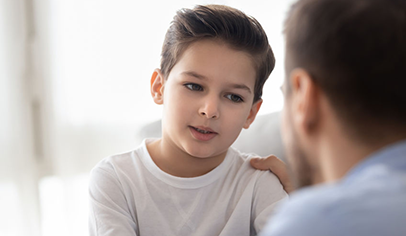Social and Emotional Support at Back to School: How PTOs Can Help

When times are tough for everyone, your parent group can play a key role in helping support the school community.
Helping kids manage stress and anxiety can be a challenge during the best of times, and it’s been anything but the best of times since spring 2020. With the spread of COVID-19 and the shift to distance learning, it was an extreme—and at times, impossible—challenge for just about everyone involved.
Then the death of George Floyd in police custody sparked public protests, and sometimes riots, like students had never seen.
Even now, more than a year into the pandemic, there are still many unknowns about what will happen next. It all adds up to a long list of potential feelings about going back to school. Kids might be afraid they’ll get sick or sad about deaths of people they know. They might be confused about all the ways school has changed from before and worried about racial tensions.
Helping kids and families is what parent groups do, but how to even start with such a list of concerns? Acknowledging the enormousness of the situation is a critical first step, says Jill Cook, assistant director of the Association of School Counselors in Alexandria, Va.
“We’ve all experienced a shared trauma,” Cook says. Helping move students through that trauma “has to be a comprehensive conversation. It can’t just be what schools think students need. It has to be what everyone needs.”
Your parent group can play a key role in helping support families from a distance, even if volunteers aren’t allowed into schools.
The nonprofit WestEd.org has published a brief called Community-Care Strategies During the Coronavirus Crisis that includes helpful tips for schools and educators. The brief states that “just as schools play a large role in society’s response to the pandemic, every member of a school community has a part to play in maintaining a sense of connection and ensuring that those who need the most support get it. Remember that everyone in the community is in this challenging period together.”
Here are ways experts say you can help:
-
Prioritize communication with school staff about district plans for reopening and for minimizing the spread of COVID-19, and ask how your PTO can help. Continuously “work with schools to determine needs and finding ways to help. Offer support in whatever ways you can,” Cook says.
-
Acknowledge to parents that current events are contributing to fear and anxiety, and help them through any stigma that their kids could be experiencing mental health issues.
“[Parent groups] can be critical in helping destigmatize the need to support mental health and spreading the message that [their feelings] are OK,” Cook says.
-
In spring 2020, many parent groups stepped up to support students with virtual spirit weeks, Zoom meetings with school mascots, and more. Continue those spirit-builders, or try new ones for back to school.
-
Work with the principal and school nurse to help encourage and implement healthy habits at school—collecting and distributing disinfectant wipes, putting up posters encouraging handwashing, etc. Even if you can’t go in the building during school hours, you might be able to help with these healthy habits when kids aren’t in the building.
-
If you have a room at school typically used for PTO business, talk to the principal about using it as a place for quiet or reflective time if needed, Cook suggests. You might even ask about helping turn another space at the school into a meditation room that teachers or counselors can use.
In that vein, Cook also recommends sharing resources like Virtual Calming Room, a collection of meditation exercises, puzzles, sounds and music, and more from Sacramento City Unified School District’s Student Support & Health Services Department.
-
Also make communicating within your group a priority. It’s an overwhelming time for everyone, and adding intentional community-building and self-care strategies to your meetings can help relieve stress, which helps you keep going. For a parent group, this could mean making some time just for fun and decompressing—a happy hour meeting, for example, or one where everyone has to tell a joke or a funny story. (WestEd.org)
-
Educational inequities like not having Internet access at home were a significant issue during 2020 and 2021 school closings and remote learning. If possible, work with your administration or district on ways your group might be able to help families who don’t have computers, Internet access, or technology skills to consistently engage online. (WestEd.org)
-
Ask staff who work with those students who need the most support in a typical school environment whether there are ways you can help. It’s likely that these students will have even more needs now. This could include ESL and special education instructors and the school counselor; they most likely will have identified many students with disabilities, English learners, LGBTQ students, students experiencing homelessness, students taking care of younger siblings, and undocumented students—many of whom will be under significant stress as they cope with challenges, both existing ones and new ones created by the COVID-19 pandemic. (WestEd.org)
Originally posted in 2020 and updated regularly. Emily Graham contributed to this article.





















